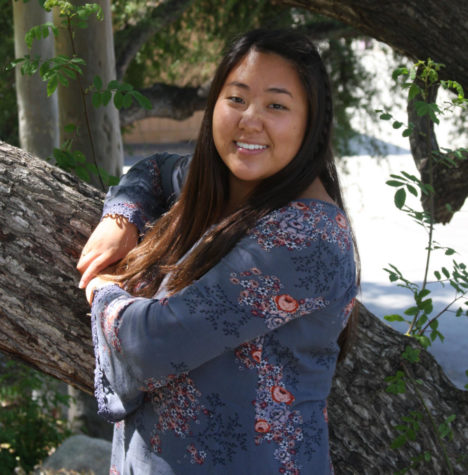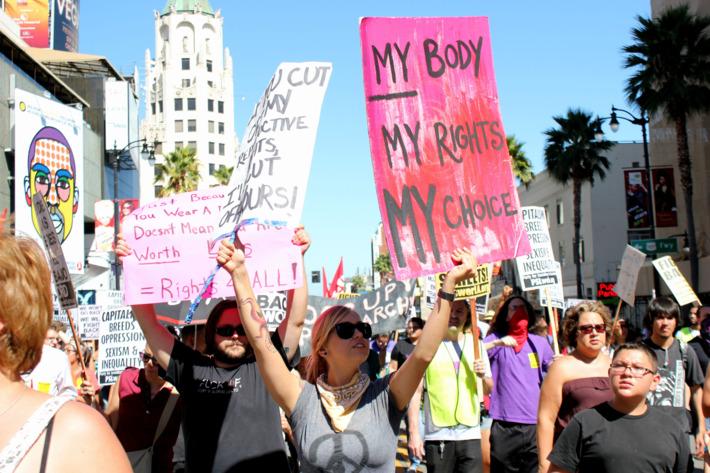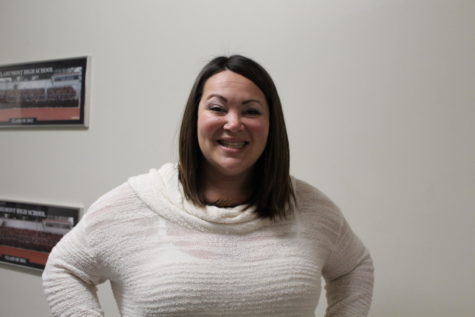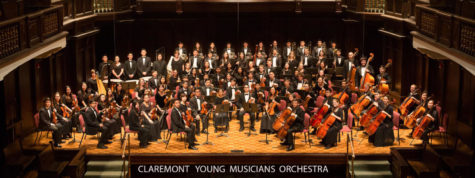Women’s March: A Day of Protest Forever in the History Books
On Jan. 21, 2017, across hundreds of major cities in the United States, both women and men gathered to protest President Trump by participating in the Women’s March, which marks the largest protest in U.S. history. Trump has offended, and been on record of sexually objectifying, women throughout his life. Many women as well as men discovered a loathing of Trump after an old video was released with him bragging about sexually assaulting women. This video then led to many women claiming that they were sexually harassed or sexual assaulted by Trump, such as Temple Taggart McDowell, a former Miss USA contestant. The day after Trump’s inauguration, women and men from around the United States gathered together to raise their voices to such injustices, and many residents from Claremont and CHS took place in the marches.
Marches took place all around the United States, within most states that Clinton won during the election. Not only did marches happen within the US, but they also took place in the United Kingdom. This was in fact very moving, knowing that despite the distance between the US and UK, women and men still supported one another.
“The march, for me personally, was important because not only was it a sign of resistance against a person who does not believe in our (women’s) rights, but it was also a symbol of unity and change,” senior and women’s march attendee Julia Kim said. In Washington D.C., half a million marchers gathered to take part in the Millions Women March along with millions of other people across the country marching in cities like Los Angeles, which rallied between 500,000 to 750,000 people. Many men and women from Claremont and CHS, attended the LA March. On Saturday, as mothers, daughters, and friends gathered onto the train, many had to stand because there were no more seats. The train conductor had to inform further stops that there was no more room on the train and that they would have to wait for another one.
“It [the march] was very empowering. The whole time I had moments where I felt angry for having to demonstrate that women have natural rights at all. But then I knew I was surrounded by people feeling the same way and were still fighting. I feel an internal obligation to show that not only is this wrong, but it is unacceptable and will not be stood for,” sophomore and Women’s March attendee Lucía Martinez said.
Getting off the train in LA, streets were packed with protesters, holding signs up high for people to see. Men, women, and children, were together in a crowd with individuals who felt the exact same way. Protesters stretched on through the streets, shouting chants such as, “We don’t want your stupid wall, healthcare is a right for all” and “My Body My Choice.” So many different races and ethnic backgrounds came together, forgetting about any leftover tensions to support one another in a strong, common belief. One supportive group called Sikh, was handing out free food and water, encouraging the marchers onwards.
“It was unifying, a group of people coming together during such a hard time, fighting for the same issues. Especially, during such a divided time and it was inspiring,” junior and Women’s March attendee Laurel Marchant said.
Women have gained the right to vote, receive education, and take on professions that were originally deemed as a “man’s job.” This shows that women have come a very long way from the once societal ideals of the domesticated roles of women, but even in today’s society, these stereotypes still linger. Sadly, instances like these are still perpetuated by the man who sits in the seat of the president. As an effect, women all around the United States came together as one on this date, raising their voices once again to fight for the well-deserved respect of women.
Image courtesy of New York Magazine
Hello there! Our goal is to provide relavent, engaging journalism for readers of all ages. Your donation will support the student journalists of the Wolfpacket at Claremont High School, and will allow us to purchase equipment, print our monthly issues, and enter in journalism competitions. We appreciate your consideration!

Bridget Englebert is a senior at Claremont High School and this is her fourth year on Wolfpacket. Working as Co Head Editor for the sports section, she...







